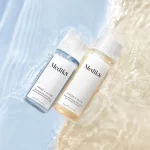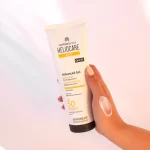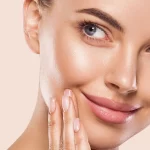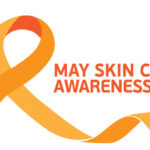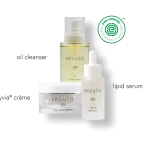Which looks younger – dry, dull skin or a hydrated, dewy complexion? The answer, of course, is the latter. We all know how important vitamin A is in reversing the signs of ageing, but it has a companion which takes the effects to a new level: hyaluronic acid.
The chances are your clients will have heard of this super ingredient. Known for its incredible moisture retaining abilities, it’s their skin’s not-so-new best friend. So what exactly is it, and why should you be recommending products that contain this anti-ageing hero?

Take a closer look…
Hyaluronic acid, also known as hyaluron or HA, is part of a group of substances in the skin called glycosaminoglycans (GAGs). Their primary purpose is to maintain collagen and elastin by helping them to retain moisture, and this is what hyaluronic acid does best.
It has a unique capacity to hold an astonishing 1000 times its own weight in water, plumping out the skin and reducing the appearance of wrinkles.
Over 70% of our body is made of water, so keeping moisture levels balanced is key to beautiful skin and general wellbeing.
Plump, youthful skin
Hyaluronic acid is naturally present in many areas of the body including joints, tendons and eyes. Around 50% is found in the skin; it’s the main component in the extracellular matrix that holds cells together to form living tissue.
“Hyaluronic acid has a major structural function to keep the dermis at optimum volume because of its amazing ability to hold water and cushion cells like a protective gel”
says ANP founder Dr Des Fernandes.
“This property has an important shock-absorbing function that protects blood vessels and other structures.”
It works in the space between cells by filling the gaps between the collagen and elastin scaffolding, like mortar between bricks. It also has antioxidant and anti-inflammatory properties, so as well as helping to turn back the clock it also has a calming, protective effect.
Restore and Replenish
Although our bodies produce hyaluronic acid naturally, the amount declines as we age so it’s important to replenish by applying it topically and taking it in supplement form. Levels typically start to drop after the age of 40, and you may even have clients over 60 who have none at all. In addition to the intrinsic ageing process, external factors can also deplete levels.
“Hyaluronic acid has a high turnover rate, it only lasts 2-3 days in the skin”
says Dr Fernandes.
“We break down about a third of our hyaluronic acid every day so we can easily fall into a deficit if we expose our skin too much to the sun. UV rays destroy it, this causes a thin skin with poor keratinocyte activity.”
Other external aggressors such as pollution, smoking and alcohol can also degrade hyaluronic acid so it’s important to safeguard levels in order to achieve plump, youthful skin.
Believe the Hype
The anti-ageing effects of hyaluronic acid on skin may seem miraculous, but it’s backed by cold, hard evidence. In fact, there is so much research that a team of scientists undertook a review of the most recent studies and found that it does indeed have impeccable skincare credentials*.
“A thorough analysis revealed that hyaluronic acid based formulations exhibit remarkable anti-wrinkle, anti-nasolabial fold, anti-ageing, space-filling, and face rejuvenating properties”, they stated. “This has been achieved via soft tissue augmentation, improved skin hydration, collagen and elastin stimulation, and face volume restoration. Our critical analysis evidenced that application/administration of hyaluronic acid exhibits outstanding nutri-cosmetic efficacy and thus is warranted to be used as a prime component of cosmetic products.”
Hyaluronic acid is amazing – it’s official.
Size does matter
Topical application is essential, but your clients should be wary – while many brands happily boast about the fact that their product contains hyaluronic acid (sometimes called HA on the ingredients list), they’re less keen to tell you that the molecules are often too big to penetrate the skin. For this reason, it’s important to educate your clients, because hyaluronic acid is available in different molecular weights.
In one study, women aged 30-60 applied a cream containing 0.1% Hyaluronic Acid to the eye area for two months, resulting in significant hydration and elasticity and reduction in wrinkle depth. Crucially, the researchers found that the lower the molecular weight, the better the result.^
Inside out
Taking hyaluronic acid orally has also shown to have huge benefits for skin. In one of many studies, 60 subjects were given 120mg for three months. They all showed significant improvement to wrinkle depth, skin luminosity and suppleness compared to the placebo group.~ Another piece of research confirmed that not only did ingesting it dramatically improve dry skin, it also increased synthesis of the body’s own supply and stimulated cell proliferation in the fibroblasts.¤ Interestingly, a settlement in Japan called Yuzuri Hara has become known as the ‘Village of Long Life’ because over 10% of its inhabitants are aged over 85 (10 times the Western norm).
Most are fit and healthy with amazing skin. Scientists discovered that they eat root vegetables specific to that area which are full of hyaluronic acid, providing further evidence of its incredible youth-boosting properties.
Perfect Partners
In addition to replenishing hyaluronic acid levels topically and orally, it’s important to encourage the body to ramp up production. This is where that other anti-ageing hero comes in – Vitamin A. “We constantly need to replace hyaluronic acid and the most effective way to do that is to ensure adequate levels of Vitamin A in the skin”, says Dr Des Fernandes.
“It’s one of the most powerful stimulants for hyaluronic acid production. This is why we say that Vitamin A is a moisturiser and the moisture that your own body makes using Vitamin A is so much better than anything you could apply.”
So next time you see clients concerned about ageing, a tailor-made skincare regime with hyaluronic acid and Vitamin A is your go-to solution.
It might not the fountain of eternal youth, but it’s possibly the closest we’ll get.
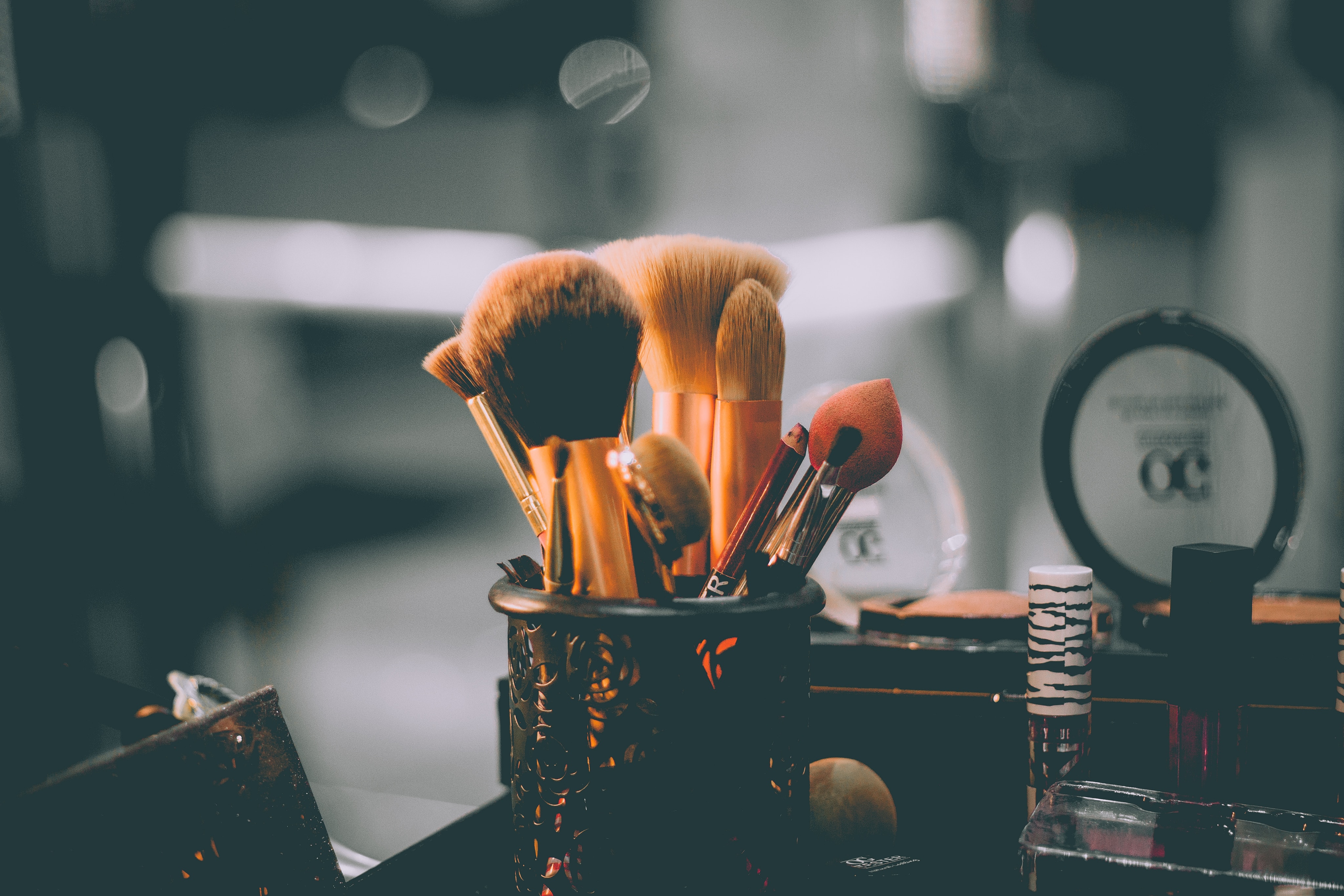
In Review; Advanced Nutrition Programme Skin Moisture Lock
Advanced Nutrition Programme Skin Moisture Lock A glowing, hydrated complexion provides the perfect canvas for party season make-up, but seasonal changes can leave skin feeling the polar opposite. Skin’s Natural Moisturising Factors and ceramide levels decrease, partly due to the effects of all that cosy central heating. As if this wasn’t bad enough, we have […]

Happy Gut = Healthy Skin
Do you want beautiful, healthy skin and to support a normal, healthy gut? What we put on our skin on the outside is massively important as the wrong creams and lotions can wreak havoc and leave the skin feeling and looking very compromised. However, rebalancing the skin from the inside is going to reach cells […]

Hyaluronic Acid… Why is it an Anti-Ageing Hero?
Which looks younger – dry, dull skin or a hydrated, dewy complexion? The answer, of course, is the latter. We all know how important vitamin A is in reversing the signs of ageing, but it has a companion which takes the effects to a new level: hyaluronic acid. The chances are your clients will have […]

Daily Defence – A Routine for Autumn & Winter Skin
The hot summer days will soon make way for golden leaves and chilly Autumn breezes. Changes in weather can have a dramatic impact on skin, so now is the time to prepare before winter makes its icy appearance. Daily Defence & Damage Limitation – A Guide to Perfect Skin Sometimes you just can’t win. When […]
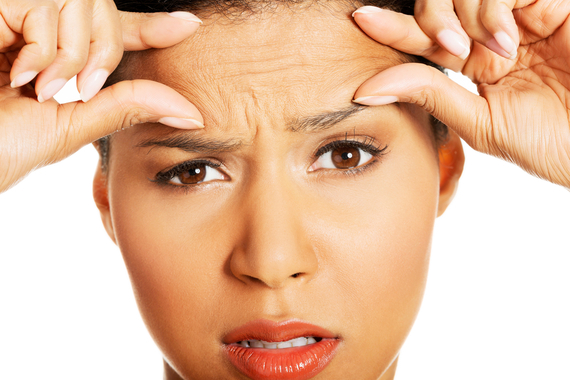
Moisture: A Must for Mature Skin
As we age our cell metabolism begins to slow and the skin’s barrier function weakens. You may notice loss of elasticity and moisture, leading to age-induced dryness and more pronounced wrinkles. Skin Moisture Lock combines hyaluronic acid with gluten-free wheat ceramides to help hydrate dull, lacklustre skin and reduce wrinkle depth while plumping for a […]
